trimethylindigane

trimethylindigane structure
|
Common Name | trimethylindigane | ||
|---|---|---|---|---|
| CAS Number | 3385-78-2 | Molecular Weight | 159.92200 | |
| Density | 1.568 g/cm3 | Boiling Point | N/A | |
| Molecular Formula | C3H9In | Melting Point | 88ºC | |
| MSDS | N/A | Flash Point | -18ºC | |
| Name | trimethylindigane |
|---|---|
| Synonym | More Synonyms |
| Density | 1.568 g/cm3 |
|---|---|
| Melting Point | 88ºC |
| Molecular Formula | C3H9In |
| Molecular Weight | 159.92200 |
| Flash Point | -18ºC |
| Exact Mass | 159.97400 |
| LogP | 1.75140 |
|
Section 1: Product Identification Chemical Name:Trimethylindium, elec. gr. (99.999%-In) PURATREM **S STEEL CYL EXTRA** **Can be ampouled** CAS Registry Number:3385-78-2 Formula:(CH3)3In EINECS Number:222-200-9 Chemical Family:metal alkyl Synonym:Indium, trimethyl
Section 2: Composition and Information on Ingredients IngredientCAS NumberPercentACGIH (TWA)OSHA (PEL) Title Compound3385-78-2100%0.1mg/m3 (as In)no data Section 3: Hazards Identification Pyrophoric material. Ignites spontaneously on contact with air causing thermal burns. Burning solid/liquid Emergency Overview: clings to clothing and skin. Primary Routes of Exposure:Inhalation, skin, eyes Eye Contact:Dust causes severe thermal burns to eyes. Irritating fumes. Skin Contact:Solid ignites. Hard to extinguish burning gel on the skin and clothing. White fumes from burning solid irritating to the tissues of the nose, mucous membranes, and respiratory tract. Inhalation: Ingestion:Ingestion of burning solid is unlikely. Solid is pyrophoric and bursts into flames causing severe thermal burns. Dense white smoke is irritating to Acute Health Affects: skin, eyes and respiratory tract. Chronic Health Affects:No information on long-term chronic effects. NTP:No IARC:No OSHA:No SECTION 4: First Aid Measures Immediately flush the eyes with copious amounts of water for at least 10-15 minutes. A victim may need Eye Exposure: assistance in keeping their eye lids open. Get immediate medical attention. Wash the affected area immediately with water. Remove contaminated clothing if necessary. Seek medical Skin Exposure: assistance if irritation persists. Remove the victim to fresh air. Closely monitor the victim for signs of respiratory problems, such as difficulty Inhalation: in breathing, coughing, wheezing, or pain. In such cases seek immediate medical assistance. Seek medical attention immediately. Keep the victim calm. Give the victim water (only if conscious). Induce Ingestion: vomiting only if directed by medical personnel. SECTION 5: Fire Fighting Measures Flash Point:-1°F Autoignition Temperature:pyrophoric Explosion Limits:no data Extinguishing Medium:carbon dioxide, dry powder or foam If this product is involved in a fire, fire fighters should be equipped with a NIOSH approved positive pressure Special Fire Fighting Procedures: self- contained breathing apparatus and full protective clothing. Hazardous Combustion andIf involved in a fire this material may emit irritating fumes of indium oxide. Decomposion Products: Unusual Fire or Explosion Hazards: Pyrophoric material. Material will ignite spontaneously in contact with air. SECTION 6: Accidental Release Measures The material will ignite spontaneously in air. Burning material may release toxic fumes. Leave the area unless Spill and Leak Procedures: fitted with a self-contained breathing apparatus. Smother fire with dry powder. Do not use water. SECTION 7: Handling and Storage Store cold. Handle and store the material under an inert atmosphere of nitrogen or argon. Prepare for the Handling and Storage: possibility of fire in transfer lines and containers after use. Keep away from heat. SECTION 8: Exposure Controls and Personal Protection Eye Protection:Always wear approved safety glasses when handling a chemical substance in the laboratory. Skin Protection:Wear protective clothing and gloves. Consult with glove manufacturer to determine the proper type of glove. Ventilation:Handle the material in an efficient fume hood. If ventilation is not available a respirator should be worn. The use of respirators requires a Respirator Respirator: Protection Program to be in compliance with 29 CFR 1910.134. Ventilation:Handle the material in an efficient fume hood. Additional Protection:Wear a full face shield, lab apron and suitable gloves. SECTION 9: Physical and Chemical Properties Color and Form:white xtl. Molecular Weight:159.92 Melting Point:88° Boiling Point:136°C Vapor Pressure:no data Specific Gravity:1.568 Odor:none Solubility in Water:reacts vigorously with water SECTION 10: Stability and Reactivity Stability:heat sensitive, moisture sensitive, pyrophoric Hazardous Polymerization:no hazardous polymerization Conditions to Avoid:contact with air Incompatibility:oxygen, halogens, oxidizing agents and water Decomposition Products:carbon dioxide, carbon monoxide, indium oxide, organic fumes. SECTION 11: Toxicological Information RTECS Data:No information available in the RTECS files. Carcinogenic Effects:no data Mutagenic Effects:no data Tetratogenic Effects:no data SECTION 12: Ecological Information Ecological Information:No information available SECTION 13: Disposal Considerations Disposal:Dispose of according to federal, state, and local regulations. SECTION 14: Transportation Shipping Name (CFR):Organometallic substance, Solid,Pyrophoric,Water-reactive Hazard Class (CFR):4.2 Additional Hazard Class (CFR):4.3 Packaging Group (CFR):I UN ID Number (CFR):UN# 3393 Shipping Name (IATA):Forbidden Hazard Class (IATA):NA Additional Hazard Class (IATA):NA Packaging Group (IATA):NA UN ID Number (IATA):UN# 3393 SECTION 15: Regulatory Information TSCA:Not listed in the TSCA inventory SARA (Title 313):Title compound not listed. Second Ingredient:none SECTION 16 - ADDITIONAL INFORMATION N/A |
| Risk Phrases | 14-17-34 |
|---|---|
| Safety Phrases | 7-16-43-45 |
| RIDADR | UN 2845 |
| Hazard Class | 4.2 |
| HS Code | 2931900090 |
|
~% 
trimethylindigane CAS#:3385-78-2 |
| Literature: Zeitschrift fuer Anorganische und Allgemeine Chemie, , vol. 267, p. 39,43,44 |
|
~% 
trimethylindigane CAS#:3385-78-2 |
| Literature: Journal of the American Chemical Society, , vol. 56, p. 1047 |
|
~% 
trimethylindigane CAS#:3385-78-2 |
| Literature: US2006/47132 A1, ; Page/Page column 7 ; |
|
~91% 
trimethylindigane CAS#:3385-78-2 |
| Literature: Journal of the Chemical Society, Dalton Transactions: Inorganic Chemistry (1972-1999), , p. 7 - 12 |
|
~% 
trimethylindigane CAS#:3385-78-2 |
| Literature: Journal of the Chemical Society, Dalton Transactions, , # 1 p. 41 - 45 |
|
~% 
trimethylindigane CAS#:3385-78-2 |
| Literature: Journal of the Chemical Society, Dalton Transactions, , # 1 p. 41 - 45 |
|
~% 
trimethylindigane CAS#:3385-78-2 |
| Literature: Journal of the Chemical Society, Dalton Transactions, , # 1 p. 41 - 45 |
|
~% 
trimethylindigane CAS#:3385-78-2 |
| Literature: Journal of Physical Chemistry B, , vol. 109, # 26 p. 12701 - 12709 |
| Precursor 10 | |
|---|---|
| DownStream 9 | |
| HS Code | 2931900090 |
|---|---|
| Summary | 2931900090. other organo-inorganic compounds. VAT:17.0%. Tax rebate rate:13.0%. Supervision conditions:AB(certificate of inspection for goods inward,certificate of inspection for goods outward). MFN tariff:6.5%. General tariff:30.0% |
| Trimethylindium |
| EINECS 222-200-9 |
| Trimethylindane |
| Indium,trimethyl |



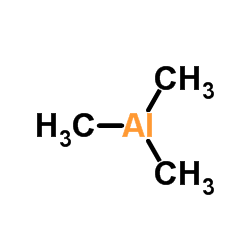



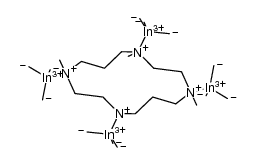

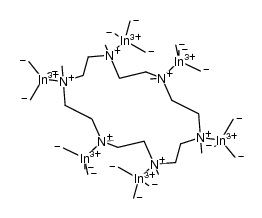

 CAS#:20533-24-8
CAS#:20533-24-8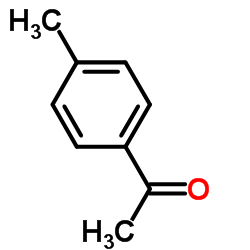 CAS#:122-00-9
CAS#:122-00-9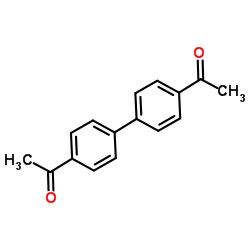 CAS#:787-69-9
CAS#:787-69-9 CAS#:129064-96-6
CAS#:129064-96-6 CAS#:2229-07-4
CAS#:2229-07-4 CAS#:138748-18-2
CAS#:138748-18-2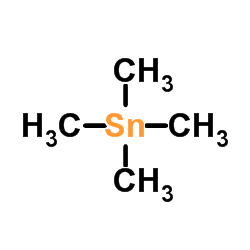 CAS#:594-27-4
CAS#:594-27-4 CAS#:23381-92-2
CAS#:23381-92-2